How to Perform a Home Energy Audit
There are dozens of ways to save on household energy, but it’s not always obvious what they are. That’s because every home is a little different, and some energy efficiency problems can’t be seen with the naked eye. The solution to this problem is a service called a home energy audit, or home energy assessment.
What Is an Energy Audit?
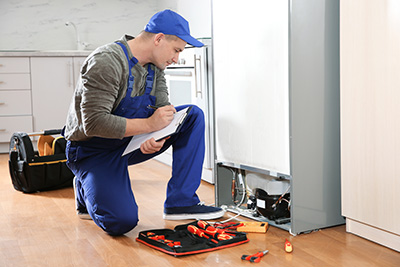
A home energy audit is a process in which trained energy auditors, or energy assessors, use specialized equipment to examine a home in search of energy efficiency issues like air leaks, HVAC problems and insufficient insulation. A professional home energy audit usually includes an examination of recent utility bills and an interview with the homeowner to help determine potential problem areas.
Some companies that provide energy auditing services also provide maintenance and repair services. But in many cases, the end product of a home energy audit is a detailed report with instructions for taking future steps to improve the energy efficiency of the home. The homeowner can then hire professionals to perform some of the more complicated work, and potentially do some of the easier jobs on their own.
If you’re not ready to schedule a professional home energy audit but would still like to try to improve your household energy efficiency, there are several ways to do this. It won’t be as detailed or thorough as a professional energy audit, but you can use DIY energy auditing techniques to identify some of the easier-to-detect opportunities to save energy.
Choosing a Home Energy Auditing Company
It’s easy to search for home energy auditing services online, but not all services are equal. At a minimum, you should try to find some recent customer reviews of a company and confirm that they use calibrated blower door tests and thermographic technology before scheduling services. If you are seeking recommendations, you can try checking with your local government or utility company to see if they have preferred contractors. You can also search for certified energy auditing services online through the U.S. Department of Energy’s Home Energy Score program or its Home Performance with ENERGY STAR program.
Once you choose an energy auditing company, be sure to listen to any instructions given to you before your appointment. You may be asked to collect several months’ worth of recent utility bills, fill out questionnaires or make specific preparations around your home.
What Happens during a Professional Home Energy Audit?
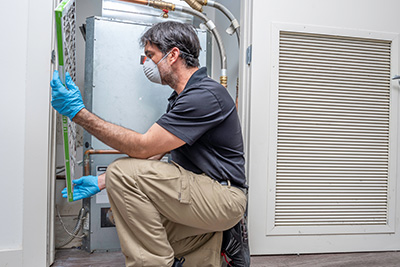
A home energy assessment typically consists of a thorough home inspection, followed by a computer analysis of collected data, resulting in a detailed recommendations report. During the home inspection, energy assessors will perform a visual inspection of every interior room and the home’s exterior. They will likely take photos, collect measurements and inspect your HVAC system, electrical system and major appliances.
The audit should include a blower door test, which involves installing a large panel in an exterior doorway. This panel contains a powerful fan that is used to depressurize the home, which makes air leaks more detectable by causing outdoor air to stream indoors. Many energy assessors use thermographic imaging equipment during the blower door test to “see” where the air leaks are, because the heat signatures of outdoor air are visible with an infrared camera.
After Your Home Energy Assessment
When the entire process is complete, your energy assessor should present you with a report that reads like an action plan. It may include recommendations like:
- Sealing specific air leaks
- Adding attic insulation
- Removing or insulating recessed lighting
- Servicing HVAC equipment, water heaters and electrical systems
- Retrofitting ventilation systems for combustion appliances
- Mold remediation
- Duct sealing and insulation
Some companies may refer you to service professionals or offer to perform some or all of the work themselves. You can also take the information from the report and hire professionals on your own. Your energy assessor may recommend a follow-up energy assessment to measure the effectiveness of your improvements, or this follow-up assessment may be built into a larger energy assessment package.
How to Perform Your Own Home Energy Assessment
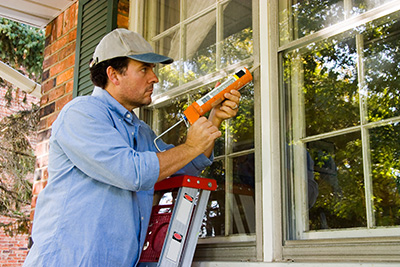
A professional home energy audit can pay for itself over time, but there is an up-front cost. Comprehensive energy audits that include blower door tests and thermographic inspections generally range between $300 and $600, according to Forbes. But if you’re not ready to spend that kind of money, there are several ways to inspect your own home and make some DIY improvements:
- Locate and seal air leaks. You can locate air leaks with the help of a handheld device called a draft detector, or smoke pencil. It emits a smooth stream of odorless smoke, and when you move it near the source of an air leak, the smoke dissipates. You can patch cracks and gaps with caulk or spray foam, and you can replace cracked or torn weather stripping using self-adhesive weather stripping kits.
- Inspect and upgrade your attic insulation. Measure the depth of the insulation on your attic floor and identify its type and R-value, if possible. This information may be printed on the paper side of batt insulation, but if you have a different type, you may be able to get the information from your home builder or home inspection documents. Compare your insulation to the recommended amounts and R-values of insulation in this climate zone map from ENERGY STAR, and add insulation as needed.
- Insulate and seal your attic hatch. Attic hatches can be weak spots; loose tension springs can cause them to sag, and the top side of hatch doors may be uninsulated. Make sure your hatch closes tightly, has an airtight gasket around the edge, and is well insulated.
- Consider upgrading your aging appliances. Major appliances don’t last forever, and most lose energy efficiency over time. Timely replacement can lead to noticeable decreases in your overall energy consumption. Here are a few typical life span lengths for major appliances: gas furnace, 15 to 20 years; electric furnace, 20 to 30 years; air conditioner 15 to 20 years; gas water heater, eight to 12 years; electric water heater, 10 to 15 years; refrigerator, 10 to 20 years; gas or electric dryer, 10 to 13 years.
- Identify and upgrade inefficient lighting. Modern LED light bulbs are affordable, long lasting and far more energy efficient than old-fashioned incandescent light bulbs. Check all of the bulbs in your home room by room, and make a list of bulbs that can be replaced with LEDs. If you find that you need to replace numerous bulbs, you may be able to save on LEDs by buying in bulk.
- Identify and address energy waste. Some appliances and electronics waste energy by consuming electricity when not out use. You can save energy by grouping these devices together using power strips and turning the power strip off when they’re out of use. Some electronics can be set to consume less energy by turning on energy-saving settings or turning off standby mode.
- Locate and seal leaky ductwork. Inspect the accessible ductwork in your basement or attic, looking for gaps and feeling for airflow where it doesn’t belong. If you find leaks, patch them with aluminum foil tape. To help improve heating and cooling efficiency, you can also wrap the accessible lengths of ductwork with duct insulation.
A thorough home energy audit may require an investment of time or money, but it can pay off in the long run. If you want to improve the energy efficiency of your home but just don’t know where to start, a home energy assessment is right for you. Looking for ways to lower your monthly energy bills? Check out our favorite energy-saving tips.
Looking for Something Specific?
Select a category to find resources for topics that interest you.
Select Category

Related Articles:
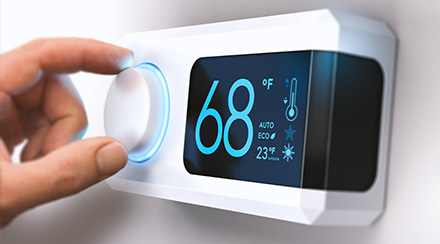
Tips for Improving Your AC and Furnace Efficiency
We share maintenance tips for your heater and AC, and home improvement tips to help you use those systems less.
Read Article
Tips for Saving on Energy in Your Home
If you’re looking to learn more about energy efficiency for home systems and appliances, we’re sharing our favorite energy-saving tips.
Read Article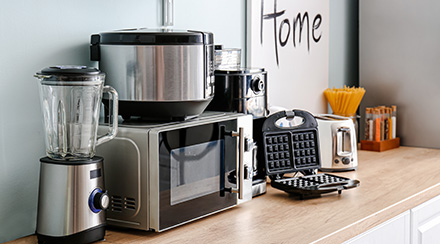
What Uses the Most Electricity In a Home?
We break down what uses the most energy in your home to give you an understanding of where your energy usage goes and where energy-saving tactics can make the most impact.
Read ArticleMost Popular Articles

Energy Plans to Fit Your Lifestyle
NRG offers electricity and natural gas plans with perks like cash back, travel rewards and more, so you can find a plan that fits your home and family.
How to Perform a Home Energy Audit
There are dozens of ways to save on household energy, but it’s not always obvious what they are. That’s because every home is a little different, and some energy efficiency problems can’t be seen with the naked eye. The solution to this problem is a service called a home energy audit, or home energy assessment.
What Is an Energy Audit?
A home energy audit is a process in which trained energy auditors, or energy assessors, use specialized equipment to examine a home in search of energy efficiency issues like air leaks, HVAC problems and insufficient insulation. A professional home energy audit usually includes an examination of recent utility bills and an interview with the homeowner to help determine potential problem areas.
Some companies that provide energy auditing services also provide maintenance and repair services. But in many cases, the end product of a home energy audit is a detailed report with instructions for taking future steps to improve the energy efficiency of the home. The homeowner can then hire professionals to perform some of the more complicated work, and potentially do some of the easier jobs on their own.
If you’re not ready to schedule a professional home energy audit but would still like to try to improve your household energy efficiency, there are several ways to do this. It won’t be as detailed or thorough as a professional energy audit, but you can use DIY energy auditing techniques to identify some of the easier-to-detect opportunities to save energy.
Choosing a Home Energy Auditing Company
It’s easy to search for home energy auditing services online, but not all services are equal. At a minimum, you should try to find some recent customer reviews of a company and confirm that they use calibrated blower door tests and thermographic technology before scheduling services. If you are seeking recommendations, you can try checking with your local government or utility company to see if they have preferred contractors. You can also search for certified energy auditing services online through the U.S. Department of Energy’s Home Energy Score program or its Home Performance with ENERGY STAR program.
Once you choose an energy auditing company, be sure to listen to any instructions given to you before your appointment. You may be asked to collect several months’ worth of recent utility bills, fill out questionnaires or make specific preparations around your home.
What Happens during a Professional Home Energy Audit?
A home energy assessment typically consists of a thorough home inspection, followed by a computer analysis of collected data, resulting in a detailed recommendations report. During the home inspection, energy assessors will perform a visual inspection of every interior room and the home’s exterior. They will likely take photos, collect measurements and inspect your HVAC system, electrical system and major appliances.
The audit should include a blower door test, which involves installing a large panel in an exterior doorway. This panel contains a powerful fan that is used to depressurize the home, which makes air leaks more detectable by causing outdoor air to stream indoors. Many energy assessors use thermographic imaging equipment during the blower door test to “see” where the air leaks are, because the heat signatures of outdoor air are visible with an infrared camera.
After Your Home Energy Assessment
When the entire process is complete, your energy assessor should present you with a report that reads like an action plan. It may include recommendations like:
- Sealing specific air leaks
- Adding attic insulation
- Removing or insulating recessed lighting
- Servicing HVAC equipment, water heaters and electrical systems
- Retrofitting ventilation systems for combustion appliances
- Mold remediation
- Duct sealing and insulation
Some companies may refer you to service professionals or offer to perform some or all of the work themselves. You can also take the information from the report and hire professionals on your own. Your energy assessor may recommend a follow-up energy assessment to measure the effectiveness of your improvements, or this follow-up assessment may be built into a larger energy assessment package.
How to Perform Your Own Home Energy Assessment
A professional home energy audit can pay for itself over time, but there is an up-front cost. Comprehensive energy audits that include blower door tests and thermographic inspections generally range between $300 and $600, according to Forbes. But if you’re not ready to spend that kind of money, there are several ways to inspect your own home and make some DIY improvements:
- Locate and seal air leaks. You can locate air leaks with the help of a handheld device called a draft detector, or smoke pencil. It emits a smooth stream of odorless smoke, and when you move it near the source of an air leak, the smoke dissipates. You can patch cracks and gaps with caulk or spray foam, and you can replace cracked or torn weather stripping using self-adhesive weather stripping kits.
- Inspect and upgrade your attic insulation. Measure the depth of the insulation on your attic floor and identify its type and R-value, if possible. This information may be printed on the paper side of batt insulation, but if you have a different type, you may be able to get the information from your home builder or home inspection documents. Compare your insulation to the recommended amounts and R-values of insulation in this climate zone map from ENERGY STAR, and add insulation as needed.
- Insulate and seal your attic hatch. Attic hatches can be weak spots; loose tension springs can cause them to sag, and the top side of hatch doors may be uninsulated. Make sure your hatch closes tightly, has an airtight gasket around the edge, and is well insulated.
- Consider upgrading your aging appliances. Major appliances don’t last forever, and most lose energy efficiency over time. Timely replacement can lead to noticeable decreases in your overall energy consumption. Here are a few typical life span lengths for major appliances: gas furnace, 15 to 20 years; electric furnace, 20 to 30 years; air conditioner 15 to 20 years; gas water heater, eight to 12 years; electric water heater, 10 to 15 years; refrigerator, 10 to 20 years; gas or electric dryer, 10 to 13 years.
- Identify and upgrade inefficient lighting. Modern LED light bulbs are affordable, long lasting and far more energy efficient than old-fashioned incandescent light bulbs. Check all of the bulbs in your home room by room, and make a list of bulbs that can be replaced with LEDs. If you find that you need to replace numerous bulbs, you may be able to save on LEDs by buying in bulk.
- Identify and address energy waste. Some appliances and electronics waste energy by consuming electricity when not out use. You can save energy by grouping these devices together using power strips and turning the power strip off when they’re out of use. Some electronics can be set to consume less energy by turning on energy-saving settings or turning off standby mode.
- Locate and seal leaky ductwork. Inspect the accessible ductwork in your basement or attic, looking for gaps and feeling for airflow where it doesn’t belong. If you find leaks, patch them with aluminum foil tape. To help improve heating and cooling efficiency, you can also wrap the accessible lengths of ductwork with duct insulation.
A thorough home energy audit may require an investment of time or money, but it can pay off in the long run. If you want to improve the energy efficiency of your home but just don’t know where to start, a home energy assessment is right for you. Looking for ways to lower your monthly energy bills? Check out our favorite energy-saving tips.
Looking for Something Specific?
Select a category to find resources for topics that interest you.
Select Category

Related Articles:

Tips for Improving Your AC and Furnace Efficiency
We share maintenance tips for your heater and AC, and home improvement tips to help you use those systems less.
Read Article
Tips for Saving on Energy in Your Home
If you’re looking to learn more about energy efficiency for home systems and appliances, we’re sharing our favorite energy-saving tips.
Read Article
What Uses the Most Electricity In a Home?
We break down what uses the most energy in your home to give you an understanding of where your energy usage goes and where energy-saving tactics can make the most impact.
Read ArticleMost Popular Articles

Energy Plans to Fit Your Lifestyle
NRG offers electricity and natural gas plans with perks like cash back, travel rewards and more, so you can find a plan that fits your home and family.







